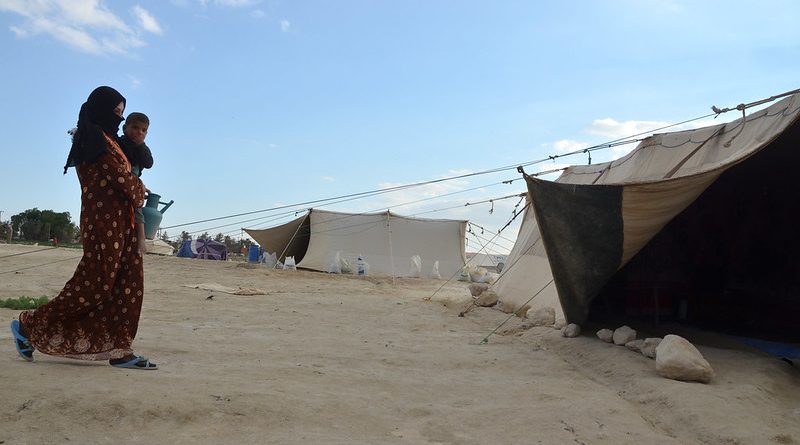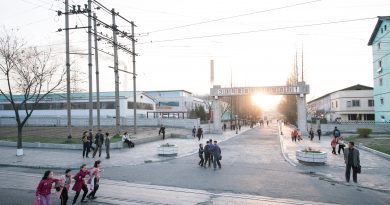Focus on Civilians in Conflict: Women and Children
Jarrett Dang
Managing Editor
In armed conflict, violence does not discriminate. Civilians in conflict zones around the world are caught between warring factions and regularly see their livelihoods ruined, families separated, and homes destroyed. The United Nations estimates that over 90 percent of the casualties in modern war are civilians – the opposite was true just a century ago, when military casualties far outweighed civilians.
Likewise, in the modern era, women and children often bear the brunt of the cost of war. Homes are left husband and father-less when the men go off to fight, and as a result, the communities left behind are even more susceptible to exploitation. The nature of war has shifted from being mostly between states to more recent struggles between states and non-state actors, such as insurgent and terrorist groups. This shift changed the scale and effects of violent conflict, rooting struggles primarily in communities rather than on the battlefield. As such, civilians, especially women and children, are much more prone to the effects of war than in centuries.
Women are disproportionately affected by violent conflict. According to Human Rights Watch, women in conflict zones are subject to violence and sexual exploitation while being too often left out of policy decision-making. In war-torn regions like South Sudan, women must deal with restrictive traditional gender roles while facing exploitation by armed groups and other actors. Even when not directly affected by war, many are targeted by unfair and outdated laws that unnecessarily restrict women’s rights and freedoms. Societies in conflict-ridden countries often relegate women to a lower status, as shown in countries like Pakistan and Burundi where women accused of ‘indecency’ are targeted by mob violence.
Sexual violence against women especially runs rampant in conflict zones. A report by the Guardian states that sex crimes against women are on the rise thanks to asymmetric wars like those in the Democratic Republic of the Congo and South Sudan. There, women are at heightened risk of exploitation by armed groups and other non-state actors, such as political militias. In other high-risk areas like India and South Asia, state security forces are instead the biggest perpetrators of violence against women. Sex trafficking is also exacerbated by conflict, as instability and war mean that enforcement of international anti-human trafficking laws is lax at best.
Work is being done both on the ground and in the international community to bolster the protection and empowerment of women in developing nations. According to BBC News, Dennis Mukwege, who won the 2018 Nobel Peace Prize alongside Yazidi genocide survivor and activist Nadia Murad, is a gynecologist from the Democratic Republic of the Congo who helps female sexual assault survivors recover from traumatic events. Activists like Dr. Mukwege are doing amazing work in conflict zones around the world, but there needs to be more concrete action from world powers to address the root causes of such violence.
In some cases, international organizations like the United Nations are actually responsible for perpetrating violence against women. Human Rights Watch points out that UN peacekeepers, who go into active conflict zones to protect civilians, have a history of sexual abuse. Women are also underrepresented in UN bodies meant to address sexual abuse, as they lack strong representatives in bodies like the UN Security Council, which is the most powerful organ of the international body.
Along with women, children are also severely affected by conflict. In its worst form, violence against children manifests in child soldiers, who are forced to fight in wars that they had no part in to begin with. In asymmetric conflicts across the globe, warlords put guns into the hands of young people not even old enough to drive and force them to fight, sometimes against their own tribes or families. Children are even recruited by government forces in some countries.
Besides being forced to fight, children are often used in forced labor and sexual slavery. In South Sudan, the rebel Sudan People’s Liberation Movement Army in Opposition movement abducted thousands of people during the country’s civil war, including many children. Among these children, hundreds of boys below the age of 15 were forced to fight, while girls were forced into servitude as sex slaves for soldiers, says Human Rights Watch.
Speaking to the UN Security Council on February 12, UN Secretary-General Antonio Guterres told the body, “2018 saw more than 12,000 children killed or maimed in conflict – the highest recorded figures since 1996.” He went to on say that more than 24,000 violations were documented and verified compared with 21,000 in 2017, according to the UN Office of the Secretary-General.
More protections are needed for children in conflict zones, as they are the most vulnerable while being the most innocent. UN organs like UNICEF and organizations such as Save the Children are bringing attention to abuses against children, but these violations will continue so long as the international community puts the issue on the backburner.


